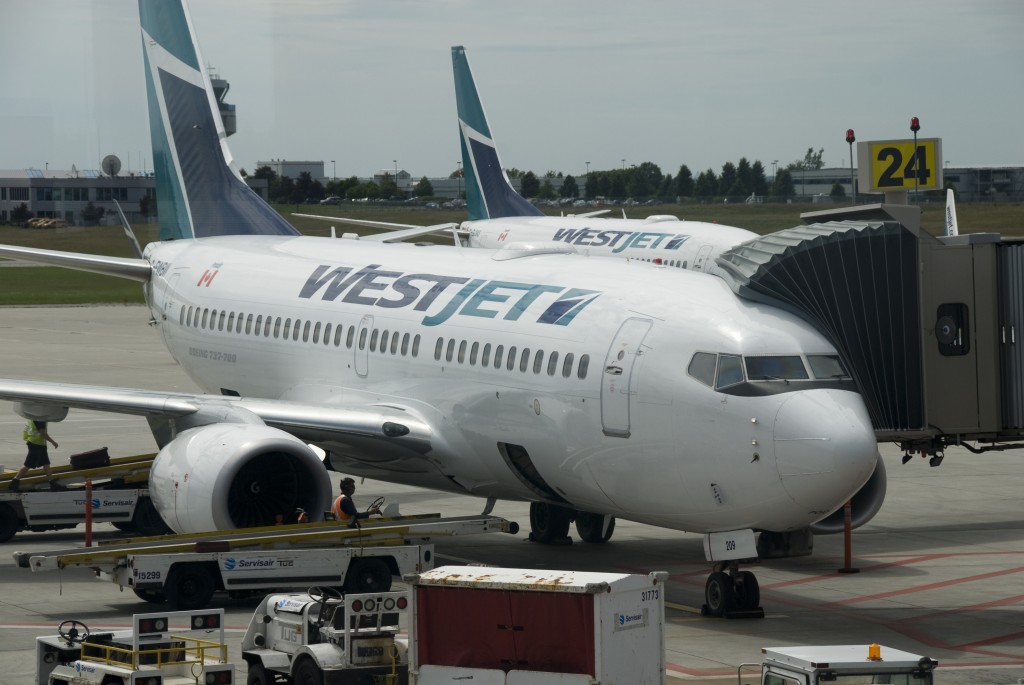
Canada’s second-largest airline may have taken a $45.5 million hit on the sale of 10 planes last year, but they stand to gain in the long run—and so do their customers.
WestJet Airlines sold 10 Boeing 737-700s to Southwest Airlines last year, as part of a routine upgrade to WestJet’s fleet. The deal resulted in a non-cash loss, meaning there are no direct implications for WestJet’s cash flow.
But it does mean they lost money.
The loss came from a difference in exchange rate from the time the planes were purchased over a decade ago. Aircraft are dealt in American funds, and the Canadian dollar was much stronger when WestJet sold the planes than it was when they first purchased them.
Despite the loss, WestJet says there’s value to the upgrade for both the company and their customers.
“We saw an opportunity to replace 10 old 737-700s with 10 new 737-800s,” said Robert Palmer, manager of WestJet’s public relations. “Fleet optimization will result in lower costs because the fleet is, overall, younger and more fuel-efficient.”
For WestJet customers, that means cheaper flights.
The new Boeing planes in WestJet’s fleet have more seats, and can operate at less cost with higher fuel efficiency and lower maintenance costs.
According to one of WestJet’s financial analysts, David Tyerman, the fleet optimization is part of a larger trend.
“In the industry you’re seeing more upgauging,” said Tyerman.
“Upgauging” is the practice of replacing smaller planes in a fleet with larger, more economic and efficient aircraft.
“A side benefit of all this is bigger airplanes have a lower seat cost,” said Tyerman. “The reason for that is they seat an extra 20 people roughly, but they don’t use a lot more fuel or other costs to fly those extra people.”
Tyerman said the $45.5 million hit is just a drop in the bucket for WestJet.
“Relative to the magnitude of the company, it’s not that large,” said Tyerman.
But it does hold implications for WestJet’s financial long game. The company is in a race with their biggest competitor, Air Canada, to expand in response to consumer demand. Both airlines have been adding seats and routes, in addition to upgauging.
“They’re trying to match their capacity and size of airplane better with the demand,” said Tyerman.
This month WestJet announced the addition of nine new routes and more flights on 15 existing routes.
“WestJet Encore is now serving Canadians coast to coast,” the company announced in a press release.
The addition of flights mostly impacted Atlantic Canada, and business routes including flights in and out of Calgary.
Both WestJet and Air Canada expanded their capacity in 2014 at a rate much greater than the growth in the economy. Both airlines project similar growth in 2015.
“How can you possibly add that many seats when the economy’s not growing that fast?” asked Tyerman.
“Those two airlines in particular picked up enough demand to be able to fill their aircraft and make more money,” said Tyerman. “Their strategies worked.”
The question is whether the same strategy will work for WestJet in 2015.
“It’s a risk for sure,” said Tyerman. “They just got a big windfall that might help them fill the airplanes, with the crash in oil prices.”
The plummeting price of oil means jet fuel will be cheaper. So while WestJet continues to upgauge, they’ll also enjoy lower fuel costs.
“Ticket prices will come down also, over time,” said Tyerman. “Which is great news for consumers.”
